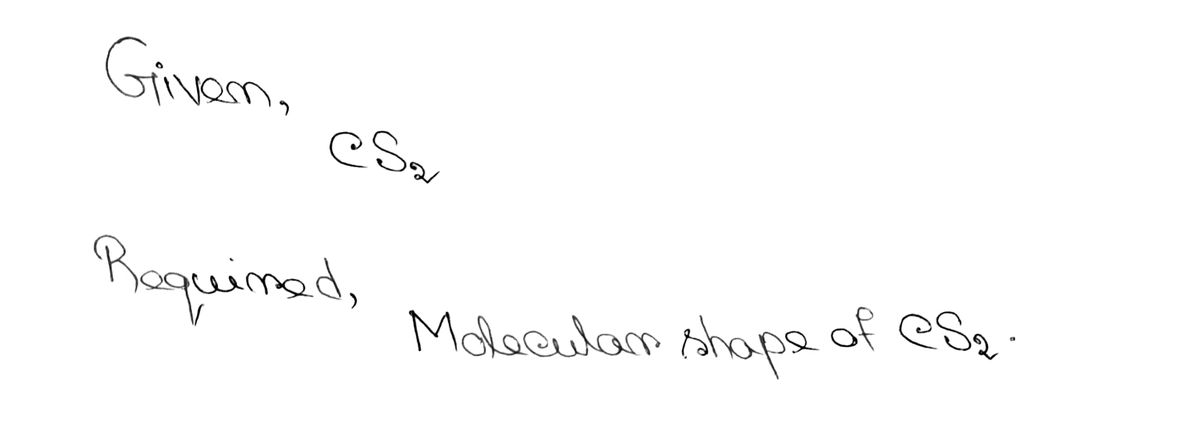Molecular Shape of CS2 (1) Carbon (2) sulfur (3) Sulfur 4₁ B2₂ E2 = AB₂E2 Step 1: Find the Central Atom Central atom is: с Look your line bond structure on page 1. S=C=S Step 3: Choose the ABE classification Circle the correct AB, E, notation. Recall, we use (A) to represent the central atom, (B) to represent the number of atoms bonded to the central atom, and (E) to represent the number of lone pairs AB₁E; AB₁E2 AB₁E AB₂E AB₂E₂ AB₂ AB E AB3 AB4 Step 5: Use the Molecular Shape table from your notes to draw the ball and stick representation Central atom A Batom surrounding central atom) lone pair Elone pair central atom/ Step 2: Count number of atoms bonded to the central atom (B) # of atoms bonded to central atom = B = Count number of lone pairs on the central atom (E) # of lone pairs on central atom = E=Q Step 4: Use the Molecular Shape Table from your notes to select the molecular shape and bond angles. Molecular Shape- Bent Bond angles = ~110° Step 6: Determine Polarity Is the central atom surrounded by identical electron groups? Circle one: yes If the answer was yes, then the molecule is nonpolar. If the answer is no, then the molecule is polar. Is the molecule polar? no Circle one: yes no 22
Formal Charges
Formal charges have an important role in organic chemistry since this concept helps us to know whether an atom in a molecule is neutral/bears a positive or negative charge. Even if some molecules are neutral, the atoms within that molecule need not be neutral atoms.
Polarity Of Water
In simple chemical terms, polarity refers to the separation of charges in a chemical species leading into formation of two polar ends which are positively charged end and negatively charged end. Polarity in any molecule occurs due to the differences in the electronegativities of the bonded atoms. Water, as we all know has two hydrogen atoms bonded to an oxygen atom. As oxygen is more electronegative than hydrogen thus, there exists polarity in the bonds which is why water is known as a polar solvent.
Valence Bond Theory Vbt
Valence bond theory (VBT) in simple terms explains how individual atomic orbitals with an unpaired electron each, come close to each other and overlap to form a molecular orbital giving a covalent bond. It gives a quantum mechanical approach to the formation of covalent bonds with the help of wavefunctions using attractive and repulsive energies when two atoms are brought from infinity to their internuclear distance.
Will you check my paper


Step by step
Solved in 4 steps with 4 images









